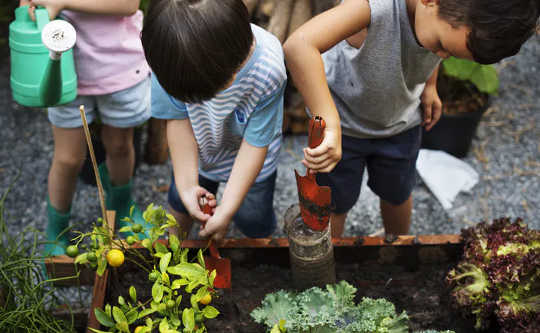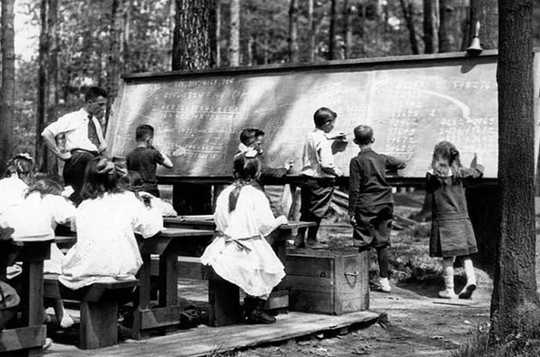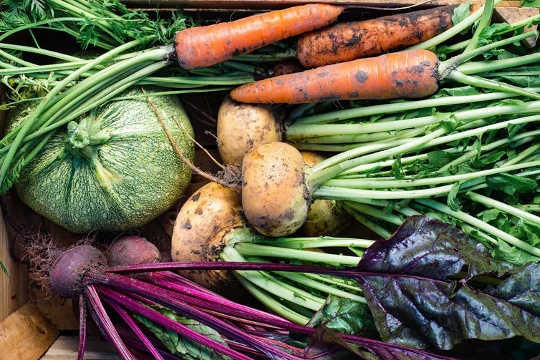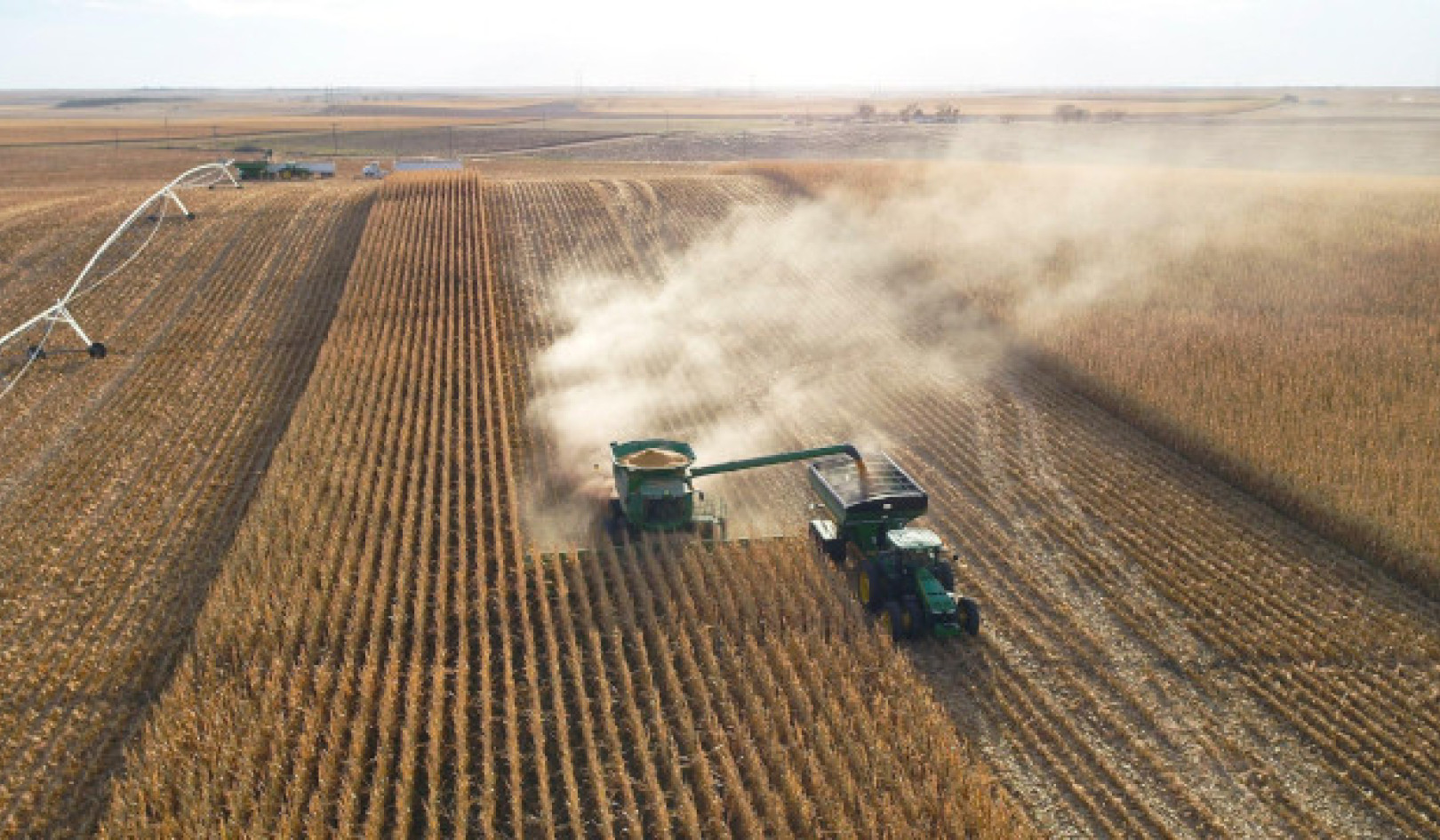
Policymakers could seize this time to support schools in choosing to take students outside. (Shutterstock)
Whether and how schools will reopen in September given COVID-19 has been discussed in news and social media throughout the summer. Smaller class sizes, alternating attendance patterns, face-to-face or online instruction and equipment such as mandatory masks have been debated by both politicians and the public.
But there is another, more obvious answer that allows for social distancing and addresses the risks of transmitting COVID-19 indoors.
Moving classes outside deserves serious consideration not only for better ventilation, but also to introduce more public education devoted to learning on, from and with the land.
As a white settler educator striving to be part of decolonizing education, I aim to learn from the examples of Indigenous colleagues and Elders who model the necessity of land-based learning if education is to help bring about reconciliation. My research and teaching is at the Queen’s University faculty of education, teaching primarily in the world Indigenous studies in education and the professional master’s in education (Indigenous concentration) programs, and much of my research has focused on land-based education. Some of my teaching relates to supporting teacher candidates in taking the necessary steps to help students reconnect with the land.
In these capacities, and also as someone who lives on a small rural farm, it seems to me the time is ripe for public school systems to integrate more learning about the land with children’s education — especially in a time when COVID-19 seems to have reignited wider awareness of the interconnectedness of our ecological and food systems.
Open-air schooling
Both before and during the pandemic, environmental and outdoor education programs have been available for students whose parents can afford to and choose to pay tuition or fees. But open-air and public schooling that integrate learning from and about the land has not always been only for the privileged.
A century ago, during the tuberculosis pandemic, outdoor classrooms were set up across the United States, following recommendations of doctors.
 Students at the High Park Forest School class. (City of Toronto Archives/Wikimedia), CC BY
Students at the High Park Forest School class. (City of Toronto Archives/Wikimedia), CC BY
An advisory group led by the Hospital for Sick Children in Toronto recently cited Toronto’s High Park Forest School, built in the early 1900s to teach children with tuberculosis, as an example of what safer schooling could be during the current pandemic.
Learning about land
Education that is based outdoors is not a new idea — neither is learning about our relationships to the land.
Indigenous Elders teach that the land is our first teacher. Anishnaabe associate professor and educator Nicole Bell, who teaches in the school of education at Trent University, shares with teacher candidates that it is from the land that we can gain an understanding of our relationships to each other and all other plants and creatures.
In the education faculty, where I teach, both Indigenous and non-Indigenous colleagues are involved in conversations focused on bringing more land-based teaching into our teacher training. For example, during the course I taught earlier this summer, which was forced online due to COVID-19, Deb St. Amant, Elder-in-residence, took 527 teacher candidates on a virtual medicine walk through a local park.
Such learning is new to many. Settlers used residential schools to dispossess Indigenous people from their lands and to undermine Indigenous Knowledge.
Settler education, embedded with imperialist, racist and classist assumptions about who should benefit and how, emphasized the economic aspects of learning about land: Queen’s PhD student Kristen Kinnard’s research is documenting a late 19th-century movement to revise the Ontario public school curriculum to include agricultural practices. Advocates believed that every student needed to know about the composition of soil to grow a garden and basic animal husbandry.
Resurgence of local food production
I am grateful for the privilege of living on our small farm in eastern Ontario, on the traditional homeland of both the Haudenosaunee and the Anishnaabe peoples. Locally we are seeing changes in food buying patterns since the pandemic hit, and I wonder if these represent a lasting movement towards personal food security due to fear of public shopping, or a growing awareness of the health benefits of local fresh food, or both?
Our eggs, chickens and goat meat are selling at the farm gate to people who are used to buying in grocery stores. As chair of a local farm association, I hear similar reports from farmers across the county. Abattoirs cannot keep up with the demand for meat processing and are currently booking into late fall as out-of-county people are pre-ordering and pre-paying for meat and vegetables to be delivered into December.
A friend who sells his pork and beef at the local farmers’ market recently commented that he feels valued and respected as a farmer for the first time in 35 years.
 Demand for seeds has increased as more people grow gardens. (Shutterstock)
Demand for seeds has increased as more people grow gardens. (Shutterstock)
Gardens are being started and backyard chickens raised. In a nearby municipality, a petition is circulating to allow backyard hen keeping within village limits.
Homegrown vegetables have also become popular this year. Seed houses have reached record sales as more Canadians have decided to turn grass into gardens.
Weather and location not barriers
Learning how to live on the land is not limited to students in southern rural areas. Nor is it impossible to teach land-based skills in cities or northern locations.
In Thompson, Man., where there are severely cold winters, teacher candidates at the University College of the North and I developed a series of land-based lessons for elementary students. This research included the philosophy that land-based education is not a field trip, but happens in the schoolyard and the neighbourhood. We embraced the idea that there is no such thing as inappropriate weather, only inappropriate clothing.
Many educators and organizations already devoted to land-based learning are adapting to the COVID-19 context. Some Inuit educators are welcoming the opportunity to reiterate the significance of teaching traditional skills that will allow survival on the land.
Policy-makers could support schools everywhere to take students outside to learn to plant a vegetable garden, catch a fish, raise a chicken and learn many other land-based skills.
They could also ensure that school boards are adequately resourced to support educators in working in partnership with local Indigenous communities and Elders to take small steps to explore outdoor activities that integrate Indigenous Knowledge with environmental education. COVID-19 has given us a reason and the opportunity to explore needed changes.![]()
About the Author
Jennifer Davis, Adjunct Professor, Queens Faculty of Education, Queen's University, Ontario
This article is republished from The Conversation under a Creative Commons license. Read the original article.
ing






















